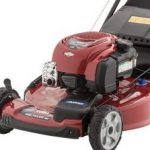
Artificial grass consists of nylon, polyethylene, or polypropylene threaded to a backing that allows water to drain through it. Once installed, it is filled with recycled crumb rubber or sand to keep it from blowing away.
(Courtesy: Shimon Hamou at flickr.com)
We have already discussed the use of natural turf and ground covers as possible alternatives for creating a lawn. There is another –- artificial grass.
Artificial grass is filaments threaded to a backing that allows water to drain through it. The backing is placed down on a drainage layer of compacted gravel and fastened down along the perimeter. Once installed, it is filled with recycled crumb rubber or sand to keep it from blowing away in a stiff breeze.
The filaments are generally nylon, polyethylene, or polypropylene that is colored to look like a real grass species. So you can find synthetic Bermuda grass, synthetic Fescue grass, synthetic Zoysia and more. Believe it or not, some artificial grass has a thatch layer that makes the yard look more realistic.
At first blush, the thought of using artificial grass may sound tacky. However, there are a number of benefits. For example, fake grass requires very little maintenance. There is no need to water or fertilize it, mow it or trim the edges, apply insecticide or weed killer. And despite the fact that you don’t have to invest a lot of time on it, the artificial grass looks as good as real grass.
The major disadvantage to artificial grass is the up front cost. For example, it can cost as much as $5 to $20 per square foot. On the other hand, professionally laid sod costs in the neighborhood of 14 cents to 60 cents per square foot.
So, if you have a yard that is in the range of 500-square feet and you want to install artificial grass that costs $12.50 per square foot, then be prepared to write out a check or charge your credit card $6,250. However, the cost of installing natural sod is in the range of $185.
Once the artificial grass is installed, there is no cost for watering, fertilizing, and performing other maintenance. On the other hand, the cost of watering real turf at $15 a month for a period of six months is $90. Fertilizing costs at 20 cents per square foot is $100. Paying a lawn man at $25 a week for 26 weeks is $650. That calculates to a grand total of $840. So it would take artificial grass about seven years of maintenance free time to recoup the initial cost. If you stay in your home for a longer period of time, then the savings continue every year.
Of course, there are negatives to having an artificial lawn. For example, it is not completely maintenance free, it can’t absorb and breakdown pet urine, it heats up in direct sunlight, it is not recyclable, and some homeowners’ associations and some municipalities don’t permit the use of fake grass. Moreover, weeds can still grow in the dust or rotted leaves that accumulate on the surface.
The negatives can be dealt with. You simply have to spend a little time blowing away or raking away leaves and hosing off the artificial grass with water to get rid of the pet urine.
Although it is true that heat from the sun will be radiated off the surface of the lawn during extremely hot days affecting people, pets, trees, and buildings, shade trees can be planted to prevent the grass from getting too hot. Hosing the fake grass down with water periodically will also assist in keeping the environment cooler.
Manufacturers of artificial grass suggest that you periodically use a common household fabric softener on the lawn to help minimize static build up and maintain the appearance of the grass.





